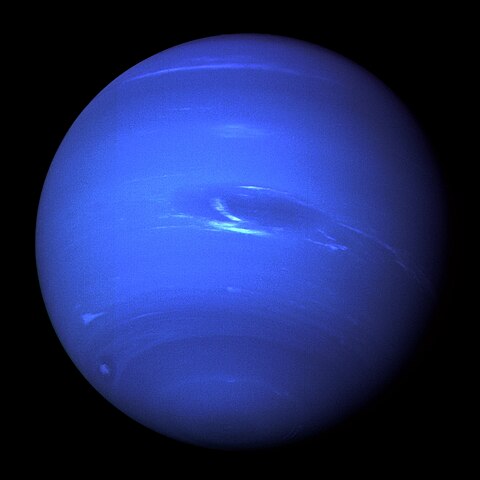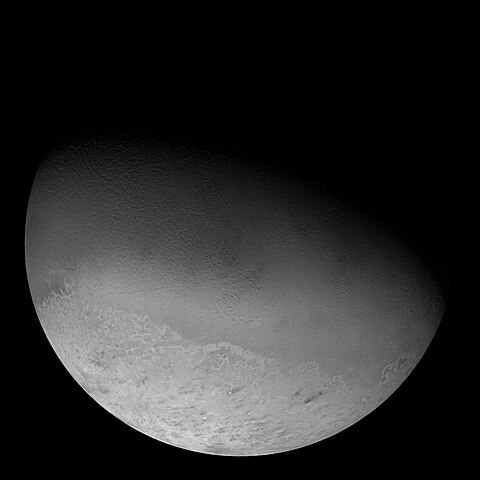1 day / second
0.5 AU
Despina
Moon of Neptune
A tiny, irregularly shaped inner moon of Neptune discovered by Voyager 2 in 1989 that orbits close to the planet and may be a shepherd moon helping maintain one of Neptune's rings.
Key Facts
learn more | Wikipedia |
mass | 1.1000e+18 kg |
radius | 75 km |
semi-major axis | 52,525.95 km |
eccentricity | 0 |
inclination | 28.536º |
longitude of the ascending node | 0º |
argument of periapsis | 0º |
orbital period | 8.036 hours |
surface gravity | 0.001 g |
discovery date | July 28, 1989 |
discovered by | Stephen P. Synnott using Voyager 2 imagery |
name origins | Named after Despoina, a nymph from Greek mythology |
dimensions | Irregular body, approximately 150 km diameter |
albedo | 0.09 |
material composition | Likely water ice and rocky material |
density | Estimated to be between 1.3-2.0 g/cm³ |
Parent Planet
Neptune
The eighth and most distant planet, Neptune is a cold, windy ice giant with a vivid blue color, powerful storms, supersonic winds reaching 1,200 mph, and a collection of 14 known moons including the geologically active Triton.









